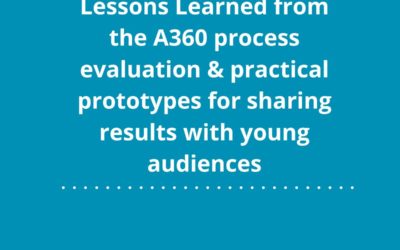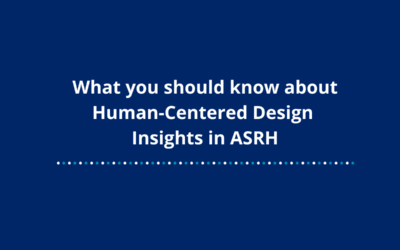Purpose
To explore best practices in navigating youth-adult power imbalances in human- centered design and adolescent and youth sexual reproductive health (HCD+AYSRH) interventions.
To identify how balancing power among adults and youth can inspire program outcomes.
 Presenters
Presenters

Sanjukta Das
Creative Lead, Dalberg Deisgn (Mumbai)
MaqC Eric Gitau (Moderator)
Former HCDExchange Project Director
What are programs missing out on when youth are not engaged meaningfully?
– Yashi Jain, Dasra
Insights
- When young people are not engaged meaningfully, programs miss critical youth perspectives that can directly lead to better solutions and outcome.
Young people have the best understanding of their own challenges, desires and what influences their decisions. - Without their input, there is a risk of putting time and resources into developing and implementing interventions that do not address young people’s needs.
- Not designing and implementing with young people can drain resources and time towards less impactful programs, and less sustainable solutions.
Proven practices to navigate youth-adult power dynamics
– Christabel Netondo, Billion Girls CoLab
Insights
- Plan on engaging youth: plan program goals with young people, define structures for engagement, collaboratively with young people and outline the rules of engagement.
- Create and foster an enabling environment:
1. Define and train young people on communication and information sharing.
2. Make space for vertical mentorship and upskilling to fill knowledge gaps
3. Strengthen organizational capacity to better engage young people.
4. Conduct power sharing exercises. - Organizations can also consider developing youth engagement guidelines to help adults navigate power imbalances.
HCD in Power Dynamics
– Jariatu Rugiatu Sillah, Youth Panelist, Purposeful
Insights
- HCD helps break conscious and unconscious biases that adults make while working with young people without intentional frameworks. HCD helps question assumptions and co-create with the end users (young people).
- HCD also promotes working with young people as equal partners in programs.
- HCD relies on understanding the needs of the end user, and involves them throughout the entire process. It also allows for testing and iterations for the end user, hence promoting adaptability.
 Key Points
Key Points
- Adult practitioners have a role to play in youth centered programs in the following ways:
– Create enabling spaces and also empower young people to own those spaces
– Recognize and show value for the contribution of youth by making use of their ideas in order to give the youth a sense of belonging.
– Provide mentorship and build the capacity of young people
– Create spaces and advocate for the inclusion of young people in internal processes
– Amplify the voices of youth in their programming decision - Meaningful engagement of young people can yield impactful solutions and create better program outcomes.
- The best way of planning youth engagement is at the beginning.
Creating youth engagement guidelines and strategies is a best practice. - HCD provides a conscious mechanism of consciously developing a youth engagement strategy, building trust with young people, and iteration of engagement strategies.
 Follow-up Questions
Follow-up Questions
- How can implementers work with young people from the early stages of project proposal development to ensure that their views, and perspectives are embedded in the programs?
- Is there step by step guidance material on how to plan for youth engagement?
- What are the implications of shifting power dynamics on parent organization’s policy beyond the programs?
Resources
- Resources on navigating power dynamics
- Ways to ensure meaningful youth participation in your program.
- Billion Girls Co-lab co-design process with young adolescent girls
- Case study of Billion Girls CoLab: Girl-led designed concepts by young women for young women, involving CBOs to pilot the same concepts in the young women’s communities
- Tar Kura project
- Insights from 10to19 Dasra Adolescent Collaborative
- Live Webinar recording



